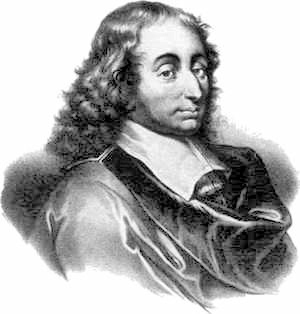[Above is a depiction of Louis XIV visiting the French Academy of Sciences in 1671.]
‘Religion provided a universal mode of thinking and of expression which pervaded all aspects of life in seventeenth-century Europe…For the great majority, strict conformity was both natural and unquestioned. Yet historians agree that this period also marked a crucial stage in the emancipation of the human mind from the blindly accepted dogma and intellectual traditions of the past.’ Thomas Munck, Seventeenth-Century Europe (Palgrave, 2005), 287.The decline of the devil
The middle decades of the century saw a subtle yet significant shift as the primary source of danger came to be seen not as the devil but as human sin and weakness. Stories about divine judgement did not go away but they became marginalized. There was a growing scepticism about hell and eternal torments. This does not mean that religion was less important and it is misleading to see the period as witnessing a growing secularism.
The new science
In the late 16th and early 17th centuries discoveries were made that completely undermined Aristotelian science.
Francis Bacon: Bacon argued that, owing mainly to an undue reverence for the past, the intellectual life of Europe had reached an impasse. He criticized the classical authorities, and he argued that knowledge could be advanced through inductive reasoning. In The Proficience and Advancement of
 |
| Ships advance beyond the Pillars of Hercules, the limits of the ancient world, in order to search for new knowledge |
Astronomy: In 1610 Galileo published his Siderius Nuncius with its forceful advocacy of telescopic observations. He used the moons of Jupiter, the phases of Venus, sunspots, and the irregular surface of the moon to demonstrate the physical reality of the heliocentric system. But this was building on the work of Copernicus and Kepler.
Galileo’s condemnation in 1632 is notorious but there is little sign that it inhibited scientific thinking. French scientists accepted his theories and even in countries more submissive to Rome, such as Spain, Italy and the Habsburg lands, there was of sign of any general move to prosecute individuals for perverse thinking so long as these views were not proclaimed too loudly
Mechanistic philosophy: Galileo’s main conceptual achievement emerged primarily from his study of falling bodies and projectiles, leading to the development of ‘mechanical philosophy. He and his disciples went on to elaborate a vision of the world as compounded of particles in motion. This was based on the theories of the Greek philosopher, Democritus (c. 460-c. 370 BC)
Descartes:
‘I should like you to consider that these functions (including passion, memory, and imagination) follow from the mere arrangement of the machine’s organs every bit as naturally as the movements of a clock or other automaton follow from the arrangement of its counter-weights and wheels.’ (Descartes, Treatise on Man, 1637)His scientific work was based on the understanding of all natural objects, including not only billiard balls and rocks, but also non-human animals and even human bodies, as completely mechanistic automata. Descartes' dualism was, in no small part, motivated by the fact that he could see no place for the soul or for freedom of the will in his thoroughly mechanistic understanding of nature. Ancient naturalists such as Aristotle, on the other hand, had no need for substance dualism because their conception of nature was teleological rather than mechanistic, and was compatible with a robust sense of human freedom. Descartes, then, can be seen as agreeing with the early modern mechanists, and disagreeing with Aristotle, on the nature of the physical world. The difference between Descartes and his mechanist colleagues was that mechanists either saw no problem for the notions of soul and freedom of the will, or else were simply willing to dispense with these notions altogether.
New instruments
The air pump: In 1648 Blaise Pascal (1623-62) (right) organized an experiment whereby the height of a column of mercury in a tube was compared at the base and the top of the Puy de Dôme to demonstrate the variations related to different air pressures. Soon the principle of the air pump, originally devised by Evangelista Toricelli (1608-47) in Tuscany, was developed by Robert Hooke in England (1635-1703) and Christian Huygens (1629-95) in the Netherlands. This device evacuated the air from a glass receptacle so that various experiments could take place inside it.
The microscope: The Dutch microscopist Anton Van Leeuwenhoek (1632-1723) worked with single lenses at high magnifications and observed bacteria, spermatozoa and other micro-organisms. His observations were extraordinary but they had no impact on medicine.
The Societies
| The French Royal Academy of Sciences was a state project. Here Colbert is presenting its members to Louis XIV in 1667. |
 |
| Hooke's Micrographia, published by the Royal Society in 1665. |
Isaac Newton
Although it met with a muted reception at the time, Newton’s Principia (1687) can be seen as the climax of the scientific revolution. Newton's real achievement was to establish a scientific outlook: observation and deduction must be verified by exact measurement and mathematical verification. Towards the end of the seventeenth century there was a reaction in favour of ancient learning, but in reality the battle had been won: it was increasingly accepted that the ‘moderns’ knew more than the ‘ancients’. They were ‘dwarfs standing on the shoulders of giants’
But Newton, a devout believer in biblical prophesy, should not be seen as unproblematically ‘modern’.
Conclusion
The seventeenth century saw an intellectual revolution. Philosophers formed their beliefs from theories of probability, statistical testing, and experimental method rather than on the ancient authorities. But religion still provided the conceptual framework. Intellectuals no longer believed in magic and they distrusted religious enthusiasm but the scientists of the period remained religious believers even if their beliefs were not always orthodox.

